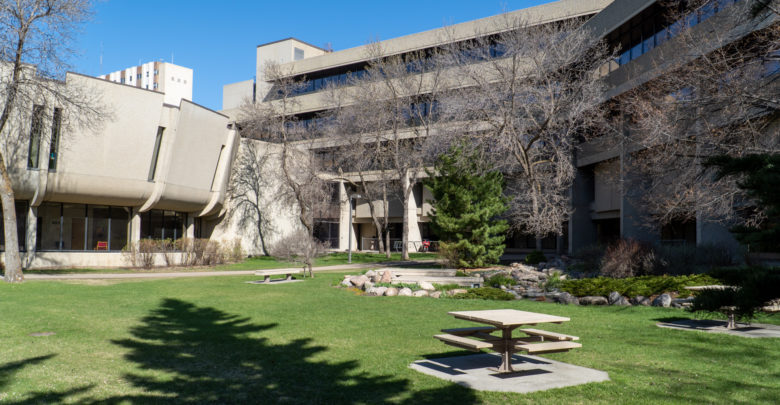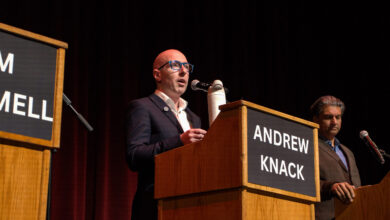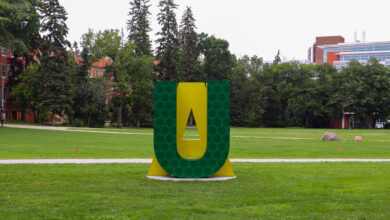 Martin Bendico
Martin BendicoUniversities are expensive. Expensive for students to attend, and the administration to run. But, when you’re paying such high tuition, you expect that you will be heard, that your studies will be prioritized, and the buildings you use will be protected.
Lately, that hasn’t been the case for the University of Alberta. With the release of the Capital Plan, many faculties have felt the weight of being at the bottom of the priorities list. Students are beginning to feel that what you study greatly impacts how important you are to the university.
The Capital Plan outlines what the university needs to do to overcome the hurdle of having too little funding with too many costs. In an effort to try and stimulate income, while also saving where it can, some buildings have been prioritized for renovations, while others have been slated for decommissioning or multi-use sharing.
The most controversial point in the Capital Plan is the Space Optimization Strategy (SOS), which hopes to reduce the U of A’s physical footprint by 15 per cent. To do this, the plan aims to condense faculties into different spaces, lease out buildings that are no longer of use, and remove those that it feels are completely useless. These changes are affecting a variety of spaces, but the proposed leasing agreement of the Humanities Centre is a blow to arts students especially.
Many older buildings on campus have struggled with deferred maintenance, which is when the university offsets renovation or maintenance to be a future issue. By removing the buildings with high deferred maintenance, the money saved can be allocated to other buildings.
In truth, the university doesn’t have full say over what faculties and degrees they prioritize. Over the past three years, the provincial government has cut $222 million from the University of Alberta’s budget. With the release of the 2022 budget, the provincial government announced the new Alberta at Work Program, which garnered over $171 million dedicated to enrolment over three years. While post-secondary education still received reduced funding, Alberta at Work provided the U of A the chance to fund programs that are in line with industries facing labour shortages.
Alberta at Work is meant to work in tandem with the Alberta 2030 initiative, which hopes to expand Alberta’s economy and post-secondary institutions by focusing on the most lucrative and in-demand industries. The university’s argument seems to be that it only makes sense to prioritize programs emphasized by the provincial government, such as those in the technology, agriculture, health, energy, and finance sectors. However, by doing this, arts programs run the risk of being underfunded, and potentially being cut later on. It’s difficult to plan enrolment and funding around Alberta’s future job sector, since we have no idea what it will necessarily look like.
Because of budget cuts, necessary renovations, and constant repairs, the university has no choice but to cut costs, and try their best to improve them where they can. Removing old buildings, renovating spaces for the more popular programs, and renting out others will create income that can only benefit the university as far as upkeep is concerned. However, in the end, it’ll ostracize students in programs deemed less popular on their own campus. The university has planned to remove some of these buildings, assuming the worst case scenario in the next few years. Instead of sticking it out, they’re assuming that the next provincial government will be just like this one.
In the Capital Plan, 10 infrastructure priorities were listed as a means for the university to solve many of the issues it’s been struggling with, like deferred maintenance. Modernizing the Biological Sciences complex and redeveloping the Education and Medical Sciences buildings are listed as the three renovation projects that need top priority. In total, these projects will cost the university $786 million, while eliminating $181.4 million in deferred maintenance costs. However, none of the buildings that a Bachelor of Arts student spends most of their time in made the list.
A provided comment from the university explained some of the ways the Capital Plan allows them to do long-term planning for infrastructure.
“The strategy allows the institution to make informed evidence-driven decisions on how to: better utilize owned space, reduce our reliance on leased space, appropriately renew or dispose of buildings, and prioritize where the university needs to invest its limited resources to address deferred maintenance liabilities.”
According to the Capital Plan, these prioritized infrastructures allow the university to “create spaces that will serve the academic and research needs of the institution in the decades to come.” That may be true for some faculties, but grossly inadequate infrastructure and funding for arts programs will do nothing to improve or better the university.
While only in the exploratory stage, Cameron Library has a repurposing proposal, and the Humanities Centre has a partnership proposal, meaning it would be leased out to whomever wants to use it. On the other hand, buildings like Human Ecology, Administration, and the Ring Houses were proposed to be removed in the Capital Plan. Thankfully, the Ring Houses were purchased for $1 each and saved from destruction, but what of the other buildings?
When reading the Capital Plan, it appears as though the university thinks there are many buildings on campus that no longer serve any real purpose, to both students and faculty. In short, they don’t make the university any money, and are too expensive to keep around. However, they’re still functional in some capacity. Instead of demolishing these buildings, the U of A has decided to open them up for multi-use sharing.
The problem is that these buildings that are being repurposed or removed are still in use. For many departments, the buildings they work in represent everything they do and work for. To lose that space symbolizes the university siding with the provincial government’s assessment that certain departments aren’t worth investing in.
Looking at the plans they have in store, I feel anything but listened to. It’s no secret that the faculty of arts doesn’t drum up as much money or publicity as STEM courses, but why does that mean my degree shouldn’t be a priority?
In the end, students are paying for the consequences of the university’s decisions. For years, older buildings on campus have fallen further and further into disrepair. Asbestos and structural issues are not new problems. Instead of fixing them, they’ve deferred repairs that were necessary, in favour of renovating and modernizing other buildings on campus.
Even now, the U of A is expanding and renewing older buildings on campus, like University Commons, which was previously the Dentistry/Pharmacy Centre. Two of the newest buildings on campus are the Centennial Centre for Interdisciplinary Sciences, and the Edmonton Clinic Health Academy, both of which are less than 15 years old.
While some older buildings are chosen for renewal, others are slated for removal. Students should be able to study and work in their spaces without fear of being crammed into any building with extra room. This isn’t going to encourage prospective students into coming to the university, it just leaves future students to deal with the same issues we’re facing today — especially with the university’s plans for enrolment growth.
Currently, the university is forced to pick between two less than ideal options. They can’t afford to fix and do maintenance on all buildings that need them, but they can’t afford to wait until they have the funding, either. It’s a juggling act that forces the university to choose. The hope is that by lowering the campus’s physical footprint, operational costs will lower as well. What money they save by lowering operating costs, and make by renting out unused spaces on campus, will then go towards maintaining and repairing the remaining buildings that the university thinks need it the most.
The struggles we’re currently facing at the U of A are complicated, and there isn’t an easy solution. Although past administrations brushed off the deferred maintenance liabilities and left them for later, they should have been a priority back then. Current administration needs to address deferred maintenance for all buildings, not just the buildings that anticipated enrolment rates deem as valuable.
Unfortunately, the university has chosen money over the needs of students, alienating a huge portion of campus. Students, and the buildings they work in, make up the heart and soul of the university. Instead of thinking about the needs of current students and faculty, administration continues to prioritize funding for an uncertain future.




